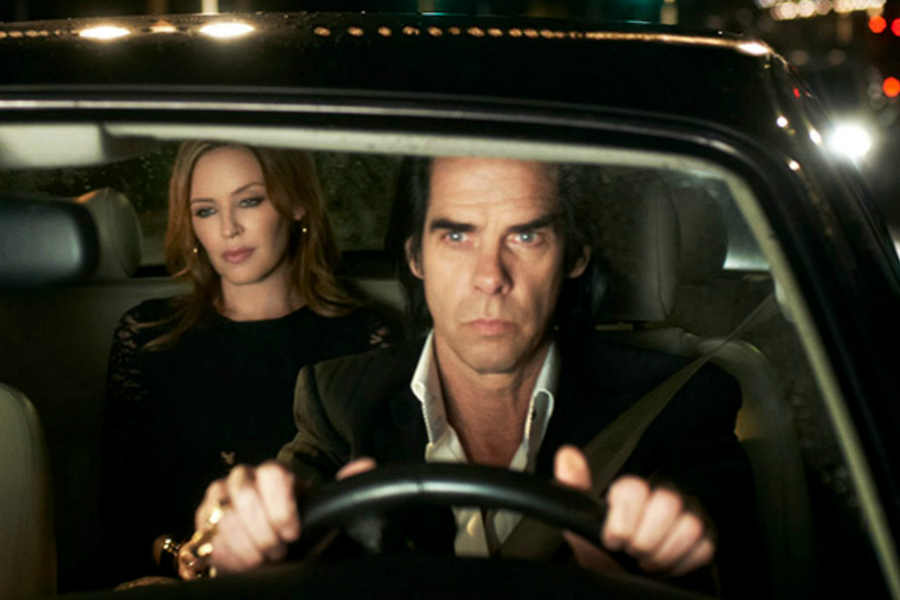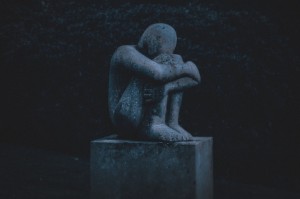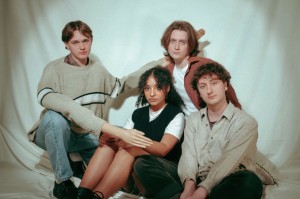Playlist: 20,000 Days On Earth With Nick Cave

Ahead of the UK release of his critically-acclaimed documentary film, Nick Cave fan Sinead Nunes explores his ‘gargantuan’ body of work…
Next week, 20,000 Days On Earth, a fascinating new documentary about Nick Cave by artists Iain Forsyth and Jane Pollard, hits cinemas following its award-winning premiere at Sundance Film Festival (described by critics as “uncanny”, “astounding”, “razor sharp” and “weird as fuck”). An iconic performer with a penchant for oversized collars and portraits of Louis Wain cats, Cave has had a prolific impact on the music industry in a career that has spanned four decades to date.
The feature film tells the story of a fictionalised day in the life of Cave, and is a bizzarre collage of fly-on-the-wall documentary, drama, biography, confessional and art film. Forsyth and Pollard have form in this area; their short File Under Sacred Music is a re-make of the infamous bootleg video documenting The Cramps legendary performance at Napa Mental Institute, California in 1978.
The 20,000 Days on Earth story is unstructured; honing in on Cave writing in his office, having lunch with his main songwriting collaborator Warren Ellis, and visiting the Nick Cave Archive (which was shipped over from Australia to his adopted hometown of Brighton especially for the shoot). Growing up in rural Victoria, and variously resident over the years in Berlin, London and São Paulo, he has spent the past decade becoming one of the seaside town’s most celebrated residents, along with his wife, former Vivienne Westwood muse Susie Bick.
For those unfamiliar with the gargantuan body of work that is Nick Cave’s back catalogue, let us take a moment to appreciate the scale and legacy of this performer’s career; with 19 albums, two novels, a handful of screenplays and seven soundtracks to his name, Cave is a committed creative genius, endlessly producing new material year after year.
His first band, The Birthday Party, was an Australian post-punk outfit formed in the late 1970s with friends Cave met at boarding school in Melbourne, and releasing their first album in 1979. Known for their raw energy, undiluted aggression and seemingly uncurbed hatred — for what, exactly was never clear — The Birthday Party was a short-lived venture for Cave, and the party was over in 1983.
Cave went on to form the Bad Seeds that same year, who have since been, to all intents and purposes, his backing band. Ever the charismatic and stylishly suited-and-booted front-man, Cave reintroduced himself into the musical canon with a unique new brand of alternative rock music, punctuated by his proficiency on the organ and fatalistic lyrics.
Nick Cave writes about the ‘end of times’ a lot, and for music critics and fans alike, his songwriting talent has gained a status comparable to that of Leonard Cohen; even Cave’s darkest, most violent ballads remain poetically beautiful. Fascinated — like the legendary country star Johnny Cash — by themes of redemption and retribution, his music is often rife with intense emotion. See the gloriously titled Murder Ballads (1996) album, or Push The Sky Away (2013); as concerned with those classic Cavian themes of violence, sex, and Armageddon as 1994’s Let Love In (my personal favourite).
Much like his recorded material, Cave’s well-documented live performances paint a picture of an equally intense stage persona. Cave is a hypnotic performer, feeling every lyric, every note, conveying a powerful sense of raw emotion — felt by thousands at his appearance at Glastonbury in 2013. His on-stage gravitas has gained him the reputation of “one of rock’s finest songwriters and performers” (Sean O’Hagan, The Guardian), and his sobriety since 1989 (after being addicted to heroin) has not affected his credibility as the ultimate rock ‘n’ roll star.
Throughout his career, Cave has collaborated with other talented musicians; from one time lover PJ Harvey (about whom many of the emotionally turbulent tracks on The Boatman’s Call (1997) were written) to country stars Emmylou Harris and Ralph Stanley for the soundtrack to 2012’s Lawless (for which Cave also adapted the screenplay from the novel by Matt Bondurant). An unlikely duet with pop princess Kylie Minogue in the mid-’90s helped Cave gain one of his few mainstream hits with Where the Wild Roses Grow.
Fans of the recent BBC 1930s period drama Peaky Blinders – which soon returns for a second season with Lawless star Tom Hardy — will also recognise the theme music as Cave’s masterpiece Red Right Hand (Let Love In, 1994).
In 2006, Cave’s dedication to producing new music led him to form yet another band, Grinderman, again with Warren Ellis, trading in his organ for a stint on lead guitar for two albums of new material. Self-admitted workaholics, Cave and Ellis then returned their focus to the Bad Seeds, with neither expressing much interest in retiring any time soon.
Cave is one of rock’s greats. While many of his fans probably expected him to be long dead by now, he’s actually creating more new material than ever before. The Old Testament-style hellfire and damnation, and brutal love songs which originally gained him notoriety, are still flowing freely from the pen of this master lyricist; and with a growing catalogue of achievements, his legendary status looks set to continue.
Sinead Nunes
20,000 Days on Earth is released in cinemas nationwide 19 September 2014 — see here for screenings
Catch A Little History: Nick Cave & Cohorts, 1981 – 2013 – an exhibition of images of Cave at Somerset House, London, by NME photographer Bleddyn Butcher — until 28 September 2014 (free entry), plus a special talk from Butcher 6.30pm 25 September 2014 (£10)





